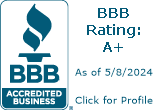Click here to read Part I: Sole Proprietorships and Part II: Limited Liability Company of our Business Basics series.
In our third installment, we’ll discuss the mechanics of corporations, and how they can work for your business and your self-directed retirement plan.
Corporation Fundamentals
Corporations are separate legal entities from their owners. This helps limit the owner’s personal liability. Because the corporation is a separate entity, the assets of the corporation are separate from the owners as well. Only corporate assets are involved in the case of corporate debts. The owner’s personal assets can then remain protected from business creditors.
An owner of a corporation is referred to as a shareholder. Shareholders elect directors to run business operations. The directors are generally elected from among the shareholders. These directors will in turn hire officers who manage business operations on a day-to-day basis.
Corporate profits are called dividends. Dividends are distributed to shareholders based on their ownership percentage. The corporation is registered with the Secretary of State. Each year, annual reports are filed and annual fees paid to the secretary of state. A corporation will also issue stock, have annual director and shareholder meetings, and keep minutes of those meetings. Doing these things helps to protect the personal liability for shareholders by maintaining the corporate structure.
All corporations start as C Corporations. C Corporations can be converted to an S Corporation by filing the Election by a Small Business Corporation, also known as IRS form 2553. The structure is called an “S” corporation because the laws surrounding the structure are in Chapter 1, Subchapter S of the Internal Revenue Code.
S-Corp Basics
Generally speaking, an S-corp does not pay any of its own corporate taxes. Instead, an S-Corp passes through income, losses, credits and deductions through to its shareholders. The pass through income and losses goes right onto the owner’s tax return. Unlike a C-Corp, this avoids double taxation which is taxed at the corporate level and then again when the shareholder pays his personal income taxes. S-Corps are limited to under 100 shareholders, which makes them a great option for small business owners. S-Corps file tax form 1120-S. A Limited Liability Company (LLC) may also elect be taxed as an S-corp.

C-Corp Basics
A C-corp pays its own corporate taxes. The profits paid to owners and shareholders are then taxed separately. Effectively, this means a C-corp pays double taxation. If a corporation needs to raise more money, it can sell more stocks. A majority shareholder of a C-corp an issue different classes of stock. For example, some classes may have voting rights and some may not. In contrast, an S-corp can only have one class of stock. C-corps tend to be more complicated in their setup and maintenance, but are still a good option for some business owners. A C-corp files tax form 1120.
Retirement Plan Contributions
Contribution limits are more favorable for corporations than other business structures like a sole proprietorship or single-member LLC. A self-directed Solo 401k plan includes two types of contributions, employer and employee contributions. You can make both types of contributions to your Solo 401k because you fill both roles in your business. While the employee salary deferral limits are the same across all business structures, the employer profit-sharing contribution limits vary slightly.
With a sole proprietorship and single-member LLC, you can make employer profit sharing contributions of up to 20% of your net compensation. However, with an S-corp and C-corp, you can make employer contributions of up to 25% of your net earnings. This means you can earn less, but make a bigger contribution with a corporation than with an alternate business structure.
Considering a corporation as your business structure can be advantageous in multiple ways. From providing a layer of asset protection to higher contribution limits, a corporation can open doors for greater profit potential and an ability to grow your nest egg faster.





